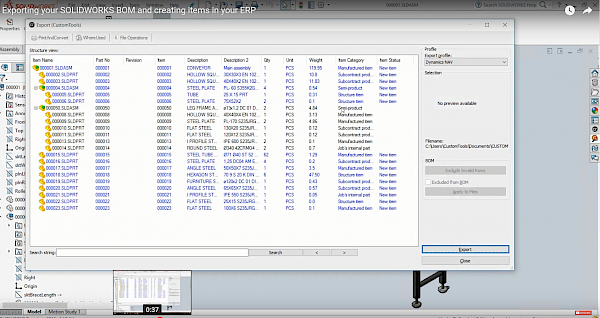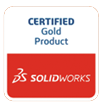博客
CUSTOMTOOLS 博客文章Why integrate ERP to SOLIDWORKS?

Why integrate ERP to SOLIDWORKS?
Feb 21, 2018 12:00 am (CET)To understand why ERP integration is critical to your business, I would like to use an allegory that may help you better understand how an ERP integration can really ease your business.
Engineering is like cooking, it requires passion and dedication to lead to success. Engineers do not only turn their ideas into products, products turn into data. As for cooking, cooks turn their ideas into dish…, dish also generates a lot dishes. At some point in the process, we have to manage those dishes (data) and we are facing three options:
- Option 1: Throw them away… Not the best approach… let’s forget it…
- Option 2: Wash those dishes manually… this is what we love doing…
- Option 3: Let the dishwasher do it for you… this is what we are dreaming of…
This is all what ERP integrations are about… do you really want to do it manually? Or would you prefer to fully automate it? Once you start using a dishwasher to clean your dishes, I believe that you never want to go back to the old good way, or if you have to then you know how valuable your dishwasher (integration) is.
Integration? What does it mean exactly
When talking about ERP integration there are two aspects to take into consideration: importing and exporting data between the two systems.
- Importing data from the ERP to SOLIDWORKS:
This could be used for instance to run live search from SOLIDWORKS against your ERP, to search for items that already exist in the ERP. For instance those items could be spare parts or manufactured parts that exist in both systems (ERP & SOLIDWORKS) but are not linked. With CUSTOMTOOLS this is very easy to implement. You only need to create a link with your ERP and define some property mapping between attributes of the item in the ERP and custom properties of the SOLIDWORKS files.
- Exporting data from SOLIDWORKS to ERP:
This is used typically to automate the creation of new items and BOMs in the ERP from SOLIDWORKS. If the items or BOMs already exsist then they can also be updated. The data export requires customization based on the ERP systems and based on the logic to be implemented, which is different for every company. This is why every ERP integrations are different from each others.
Why to integrate your ERP?
1. Unify your CAD and ERP data:
- Remove manual data entry: With an integration, you do not need to enter multiple times the same set of data across different systems. Data is entered only once and then automatically pushed to other systems.
- Eliminate errors: Improve data accuracy by removing human errors. There is an exponential growth of errors as your assemblies get larger.
- Adopts your way of working: Every ERP integrations are different from one another even if we are integrating to the same ERP. Integrations can be deployed so that it automates the way that you are working, not the opposite.
2. Fast return on investment:
- Focus on design, automate the rest, this is what one of our customers told us when asked how he would present CUSTOMTOOLS. This statement is very true when it comes to ERP integration, as typically many days are required in order to manually transfer data from the CAD to the ERP, with an integration you will turn days into minutes.
- With an integration, it takes only a couple of clicks to create BOM and items into the ERP. If it has to be done manually, you will not get very far with a couple of clicks.
Cost
Integrations are not free, manual work (or dishwasher) either. Considering the average price of an ERP I would not say that integrations are expensive. Typically an integration is a 5 to 10 days project (from 5k€ to 10k€ on average).
The real questions is not how much the integration will cost, but how much will you gain from it. Is the integration worth the investment? This may seem like a hard question to answer but it is not. You can easily estimate how much time you need to create/update items and BOMs manually in your ERP. Having an integration requires two clicks; rather your SOLIDWORKS assembly consists of hundreds or thousands of parts.
On the 15th of March at 10.00 (CET) we are going to host a webinar where we will demonstrate an ERP integration between Oscar (a Finnish ERP) and SOLIDWORKS. If you are interested you can register here.
Writer:
Francois Simon, Sales Manager



